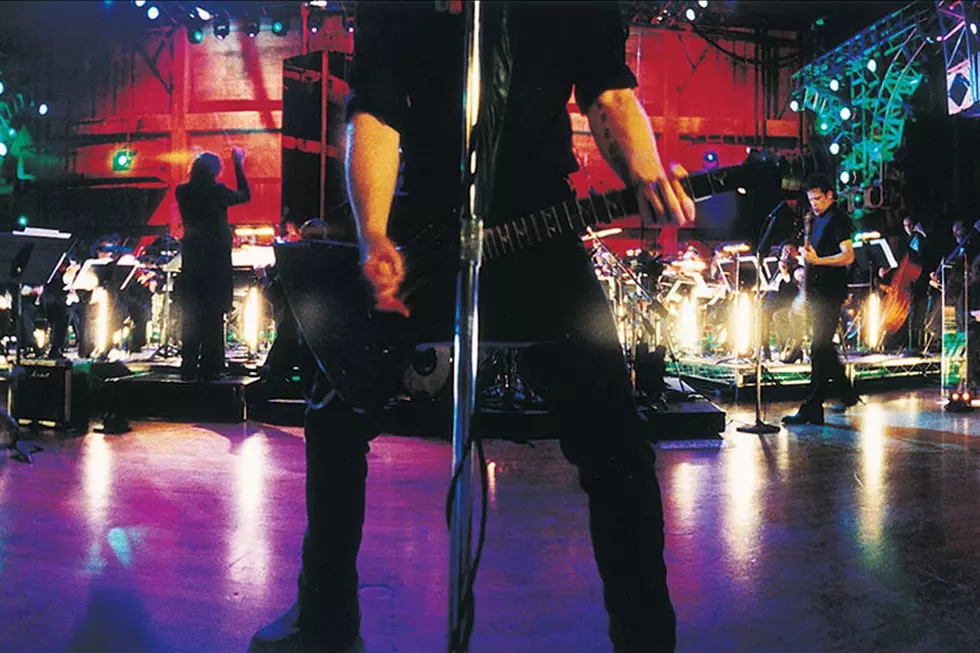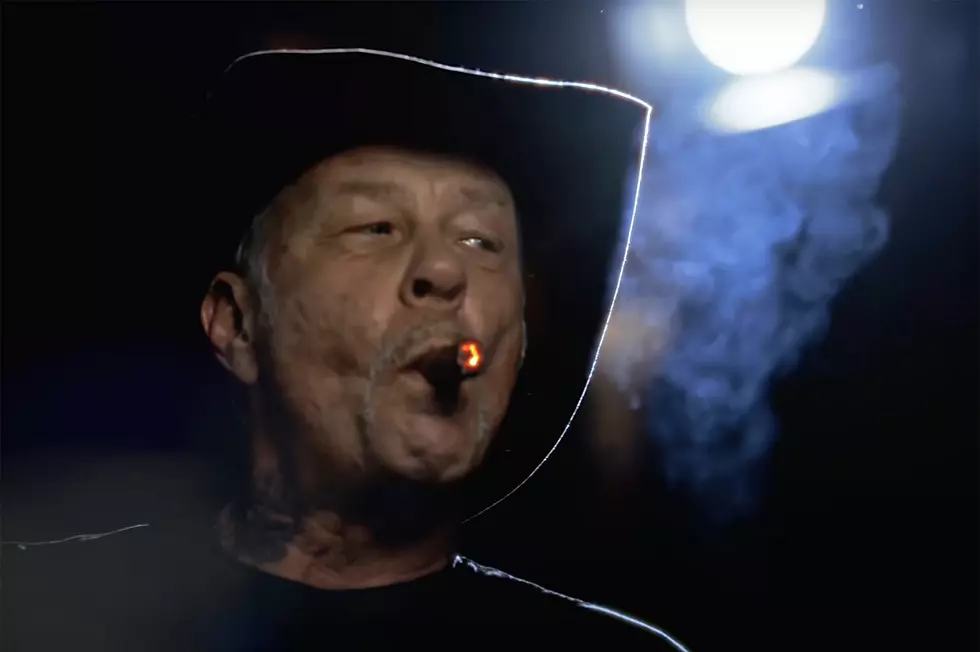
How Metallica’s ‘S&M’ Boldly Melded Classical and Hard Rock
S&M, Metallica’s daring encounter with a symphony orchestra, arrived on Nov. 19, 1999, without the slightest hint of irony about the potential pain and pleasure it might impart upon the band’s fan base. For James Hetfield, Lars Ulrich, Kirk Hammett and Jason Newsted, dizzying success gave them a chance to try something new.
They'd already released the more experimental Load and Reload albums, though to mixed reactions. Next, the foursome spent all of 1998 touring virtually non-stop, pausing only to put the finishing touches on Garage, Inc., their expansive collection of cover tunes, before taking the winter months off to recuperate.
And when they hit the road once again in April of 1999, for a trio of concerts in Hawaii and Alaska, Metallica’s intent wasn’t so much covering states they’d missed in ‘98, but preparing for a pair of one-of-a-kind (well, two-of-a-kind) performances at the Berkeley Community Theatre backed by the San Francisco Symphony Orchestra, conducted by Michael Kamen.
Metallica’s interest in marrying their typically violent metallic creations with classical music stemmed, in part, from Ulrich’s passion for Deep Purple and their 1969 Concerto for Group and Orchestra. (Former bassist Cliff Burton's wide ranging musical interests had also included the works of Johann Sebastian Bach.)
Meanwhile, Kamen had built an extensive resume of rock-star collaborations over the years, contributing orchestral arrangements for Aerosmith, the Who and Def Leppard, to name but a few.
Listen to Metallica and the San Francisco Symphony Orchestra Perform 'For Whom the Bell Tolls'
When it came time to choose the repertoire, Metallica, Kamen and the San Francisco Symphony Orchestra culled songs from every one of their albums except for 1983’s Kill ‘em All. Kamen and the orchestra initially warmed up the eager audience at hand with Metallica’s traditional concert opener, Ennio Morricone’s "The Ecstasy of Gold," then the band joined in and blew everyone’s minds by dusting off the beloved Ride the Lightning instrumental "The Call of Ktulu," which always seemed a natural fit for the classical treatment.
Then they embarked on an epic set, blending ‘80s mosh-pit classics like "The Thing that Should Not Be," "For Whom the Bell Tolls' and "Battery" with ‘90s mainstream favorites like "Hero of the Day," "Sad But True" and "Nothing Else Matters.’ Must-play hits such as "Master of Puppets," "One," and "Enter Sandman" were here, as well. S&M only begins to lose momentum when Metallica dives into an exorbitant number of Load and Reload cuts (including "The Memory Remains," "Devil’s Dance," "Until It Sleeps," etc.), many of which frankly don't feel worthy of the effort.
That said, those who might have been confused by Metallica's turn toward symphonic rock were also given two brand new compositions in "No Leaf Clover" and "- Human," something that no doubt helped S&M move some 300,000 units in its first week. The project has since racked up more than 2 million U.S. purchases and 8 million worldwide.
Beyond that, its sheer ambition (or hubris, if you're not a fan) undoubtedly puts it near the top of history’s most accomplished meetings of the rock and classical music worlds.
Metallica Albums Ranked
The Rush / Metallica Team-Up That Slipped Away
More From Ultimate Classic Rock









